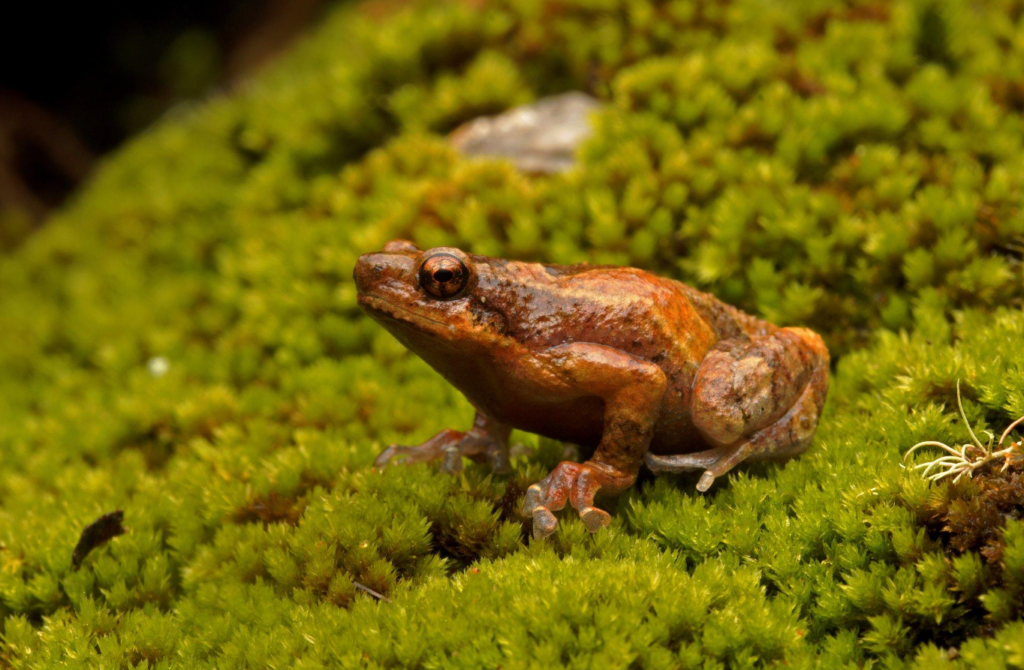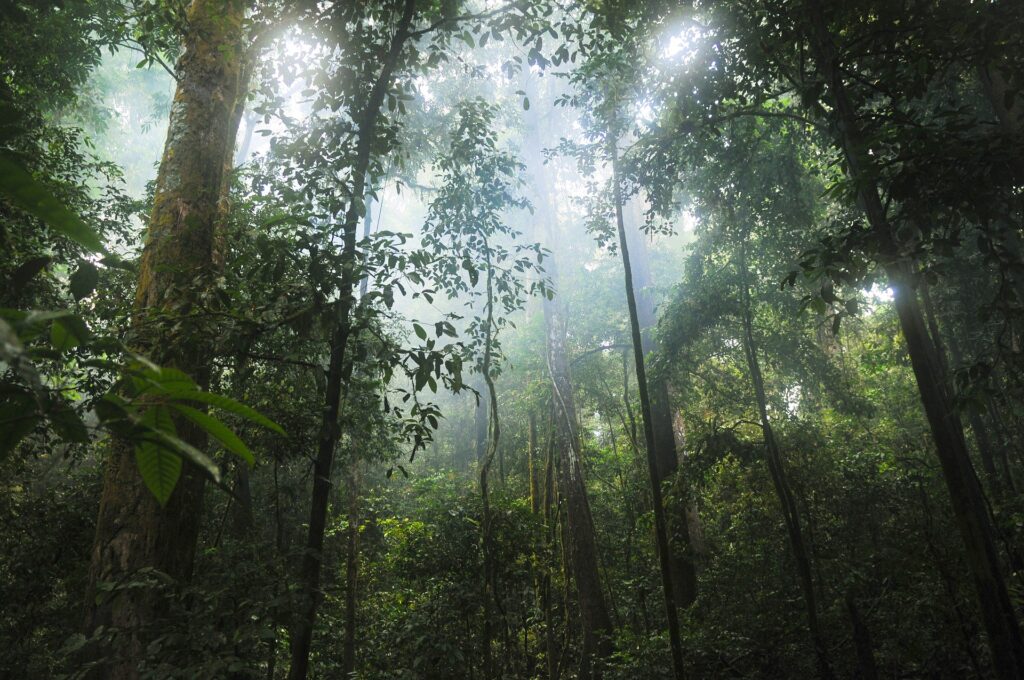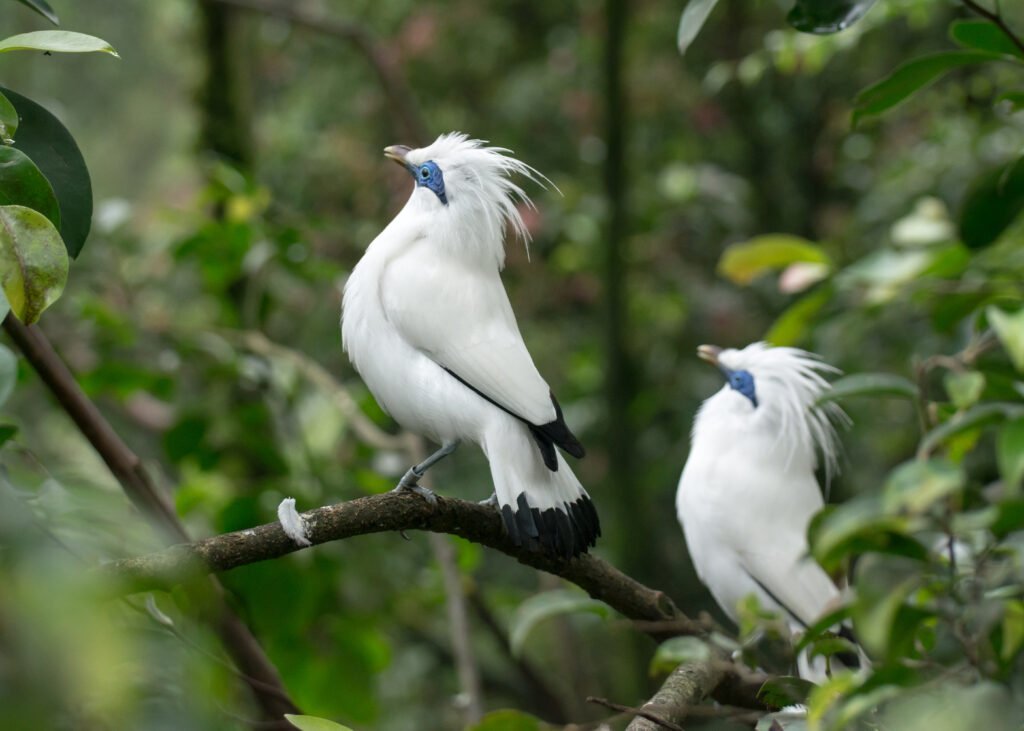There is not much use of eyes in the dark and because of this, the ears will become more useful. Someone sighs, someone tweets, someone blips and all types of insects make different sounds. The noises in the rainforest travel through the plantation in different levels.
Without knowing it, the visitors of the exhibition are covered with ads and signals from every inhabitant. The groans of a male orangutan provide the information to the females of his presence.
A tree-frog is an interesting inhabitant of the Southeast Asian rainforest. The frog makes a very quiet sound, reminding of a little blip but finds empty tree logs in order to make his voice known to all the forest inhabitants. The tree logs act as a microphone. Another incredible fact about the tree-frogs is that they can change their voice depending on the size and location of the tree log.

The so-called ads that the tree-frogs make, provide information for the female frogs about the property they have aquired. The males who can make the loudest sounds are the healthiest and have managed to obtain the biggest tree logs.
Alfred Russell Wallace, who spent eight years exploring the tropical islands of Southeast Asia in the century before last, combined his descriptions of nature with poetry, in a manner typical of the naturalists of the time. He described how the sun’s rays, following the refreshing cool of night, illuminated the magnificent tropical flora, turning into reality all that the artists’ brilliant works had depicted as an ideal of paradise on earth.

The same light shines at the end of the zoo’s small Southeast Asia exhibition night tunnel. In the spacious exhibition hall, visitors are greeted by tropical warmth and lushness. The sun’s rays streaming through the transparent roof will no doubt brighten up the artwork of the birds that have found a home in this giant greenhouse-like hall.
The beautiful melodies of bali myna bear witness to the joie de vivre. Three colorful birds with bright white plumage complement their songs with a varied choreography. The birds show off their feathered plumage, fluffy breast feathers and foliage-like open tails to nod-like movements. With their repetitive and exquisitely precise movements, the performances have a ritualistic effect, and they certainly are rituals.

Against the backdrop of birdsong and dance, careful observation, evaluation and decision making take place, with the aim of passing on to offspring the genes that will make them as successful as possible. Why is such a pragmatic necessity embedded in such a beautiful and complex spectacle, which in its exuberance reveals the performer to predators and is therefore dangerous for survival?
In nature, one of the purposes of ritual is to distinguish one’s own conspecifics from those of other closely related species. In a forest, where many performances take place simultaneously, it is essential to distinguish one’s own from that of a stranger. Falling under the spell of the wrong invitation can result in, at best, a waste of time, but at worst, diseased non-viable hybrid offspring.
The recognisable rhythm of the curtsy movements, accompanied by a cry of just such frequency and the lifting of just such a shutter – that must be my kind there! That still doesn’t explain the flamboyant nature of the wedding play.
The one who meets the standards is able to charm his conspecifics and produce many offspring. The snowball is set rolling and the ability to be charming becomes an evolutionary force. Aesthetic preferences drive efforts to attract a partner to ever higher levels.
Colors, melodies, patterns, decorations and performances – the rainforest is full of all kinds of beauty, whose origins and purposes we can analyze and justify, but all rationalization fails to sum up the mystery these experiences evoke in human nature.
We are used to enjoying art in a gallery, concert hall or theater performance, where the work is person to person, targeting precisely our own perceptual space. The work of non-human life forms leaves a certain mystery in the air for us. What is this creature’s own world – what does it perceive, notice or think, where do its aesthetic boundaries lie?
The zoo is a great place to develop such ideas. You just need to give yourself time to concentrate, your interest in another animal can grow into recognition. Life around us holds so many different possibilities, yet they are realized in a spectacle that is familiar and intrinsic to ourselves.
Individual species are like tiny cells, individuals in their modes of being, aspirations and choices, but collectively part of something larger. This is an idea that is also embodied in the Southeast Asian Rainforest exhibition that will soon open in Tallinn Zoo.
Author: Leif-August Kirs





